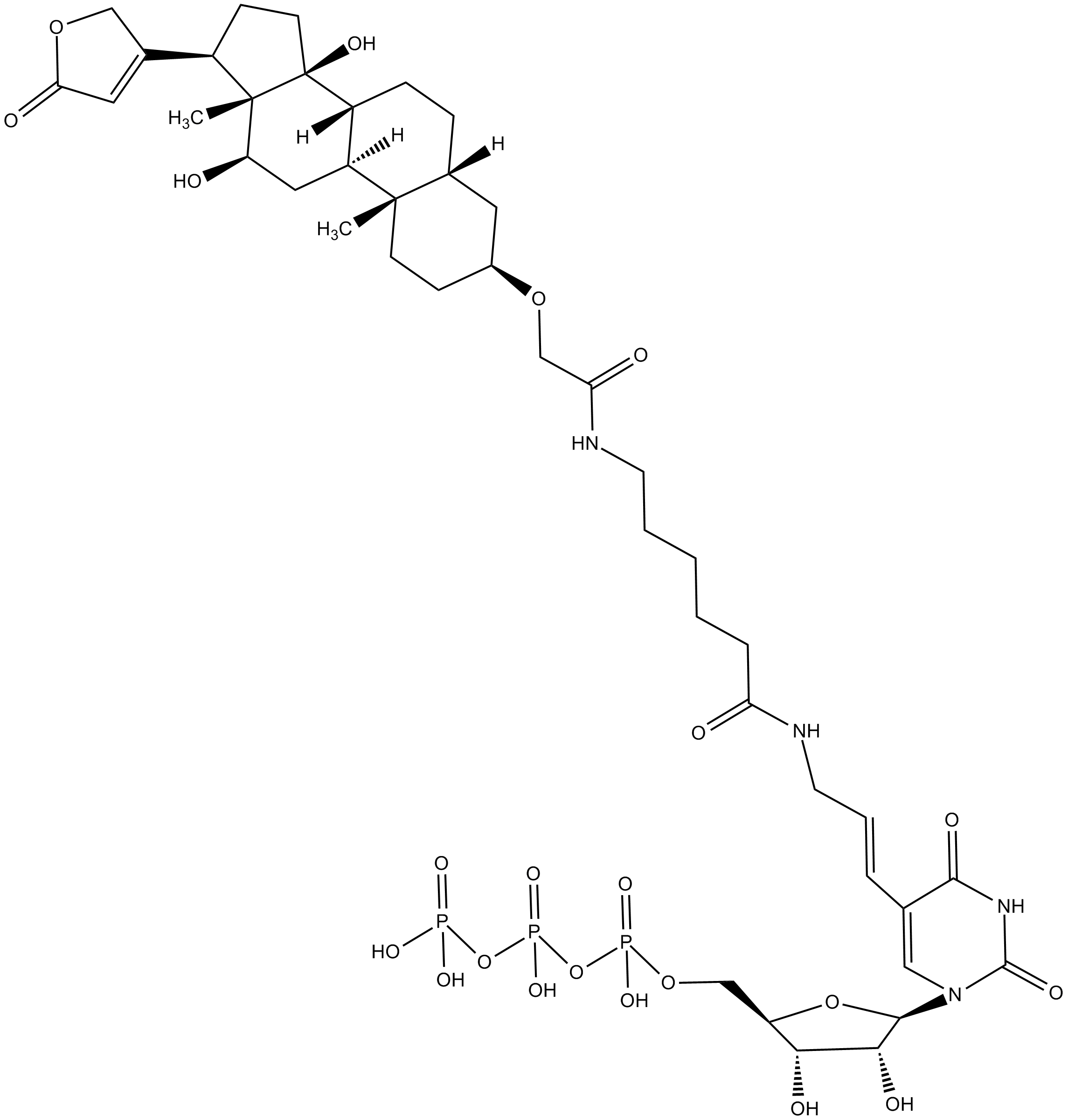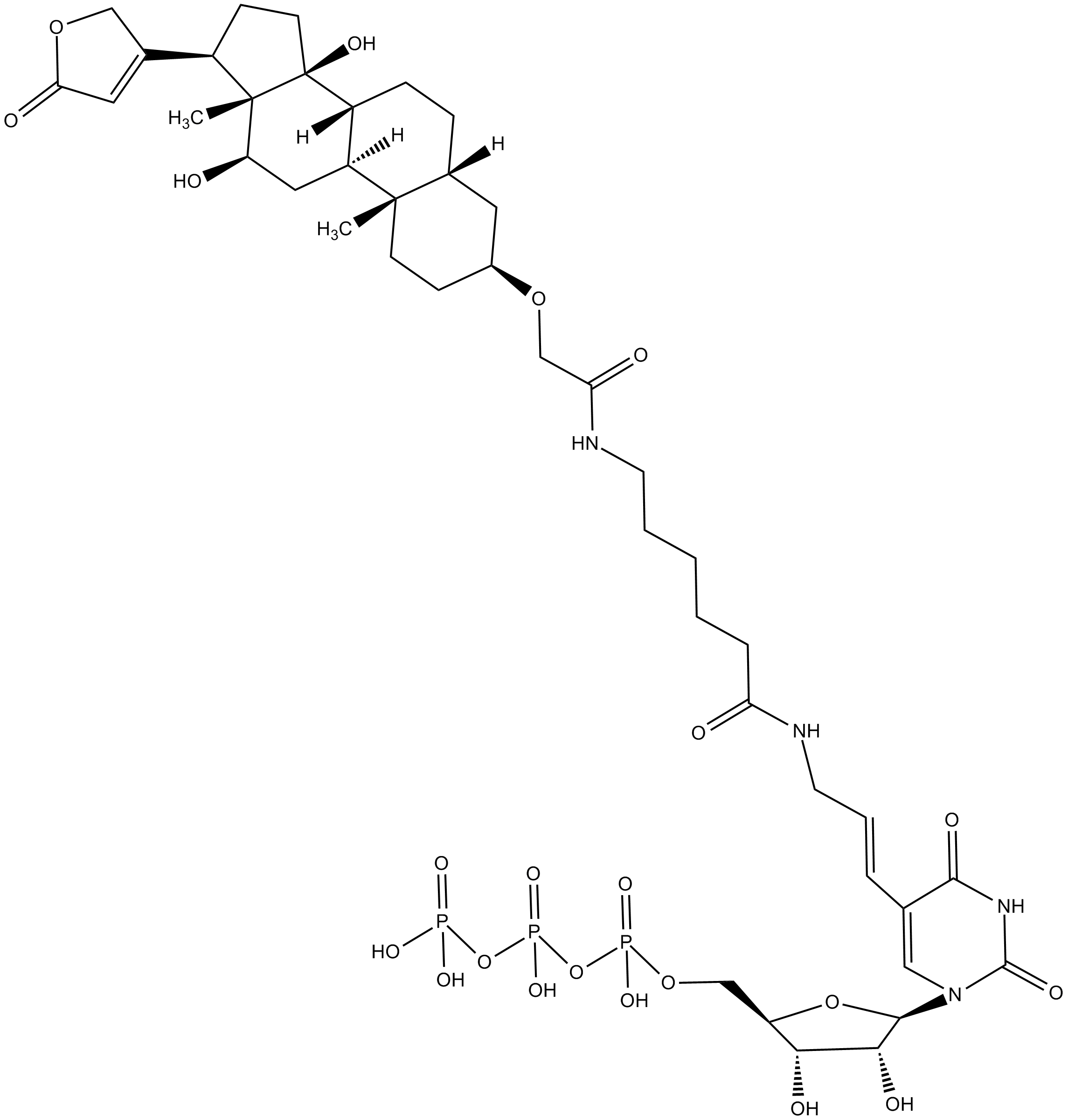Digoxigenin-11-UTP
Catalog No.
B7953
For transcription labeling of RNA probes used in in situ hybridization and other applications.
Featured Products
Digoxigenin-11-UTP is a modified nucleoside triphosphate used for labeling RNA probes. It incorporates a digoxigenin label attached to uridine triphosphate (UTP), allowing it to be incorporated into RNA molecules during in vitro transcription reactions. Digoxigenin is a non-radioactive label widely utilized in molecular biology experiments, especially in situ hybridization (ISH) and Northern blotting. RNA probes labeled with Digoxigenin-11-UTP exhibit high sensitivity and low background noise, providing clear detection results. Additionally, the digoxigenin label binds specifically to anti-digoxigenin antibodies, making the detection process both straightforward and highly efficient. Digoxigenin-11-UTP serves as an essential tool for studying gene expression and RNA localization.
| Physical Appearance | Solution |
| Storage | Store at -20°C or below |
| M.Wt | 1082.92 (free acid) |
| Formula | C43H65N4O22P3 (free acid) |
| Synonyms | Digoxigenin-X-5-aminoallyl-uridine-5’-triphosphate, Triethylammonium salt, Dig-11-utp |
| Solubility | sterile clear aqueous solution, in 100 mM Tris-HCl pH 7.5 ±0.5 |
| Chemical Name | ((2R,3S,4R,5R)-5-(5-((E)-3-(6-(2-(((3S,5R,8R,9S,10S,12R,13S,14S,17R)-12,14-dihydroxy-10,13-dimethyl-17-(5-oxo-2,5-dihydrofuran-3-yl)hexadecahydro-1H-cyclopenta[a]phenanthren-3-yl)oxy)acetamido)hexanamido)prop-1-en-1-yl)-2,4-dioxo-3,4-dihydropyrimidin-1(2H |
| SDF | Download SDF |
| Canonical SMILES | O=C1OCC([C@H]2CC[C@@]3(O)[C@]2(C)[C@H](O)C[C@@]4([H])[C@@]3([H])CC[C@@]5([H])[C@]4(C)CC[C@H](OCC(NCCCCCC(NC/C=C/C6=CN([C@H]7[C@H](O)[C@H](O)[C@@H](COP(O)(OP(O)(OP(O)(O)=O)=O)=O)O7)C(NC6=O)=O)=O)=O)C5)=C1 |
| Shipping Condition | Small Molecules with Blue Ice, Modified Nucleotides with Dry Ice. |
| General tips | We do not recommend long-term storage for the solution, please use it up soon. |
Quality Control & MSDS
- View current batch:
-
Purity = 98.00%
- COA (Certificate Of Analysis)
- MSDS (Material Safety Data Sheet)
Chemical structure









